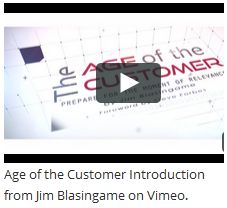Are you familiar with the term “dysfunctional family?”
The simple definition is, a family whose members don’t work and play well with each other. Such relationships typically create emotional, mental, sometimes even physical distress, and/or estrangement.
Sadly, we humans also create dysfunctional businesses. Perhaps this definition will sound familiar: A dysfunctional company is one whose teams don’t work and play well with each other. Such relationships typically create emotional, mental, sometimes even physical distress, and a casualty list.
Someone once said, “Friends we choose – family we’re stuck with.” Since we get to choose where we work and who we hire, why are there dysfunctional businesses?
The answer is actually quite simple, and it’s the common denominator in both businesses and families: human beings. If your family, or company, is dysfunctional, it’s because of the behavior of the humans.
Humans aren’t inherently bad, but we are inherently self-absorbed. And one of the by-products of self-absorption is self-preservation. When self-preservation shields are up, mistrust flourishes, goals go unmet, and failure is likely. When shields are down, productivity, creativity, and organizational well-being are evident. But the latter only happens if the stakeholders believe there is a basis for trust.
If your organization is not accomplishing its goals and making progress, look around to see if there’s more self-preservation going on than teamwork. Where evidence of individual and departmental self-preservation is found, you’ll also find lots of dysfunction, but not much trust.
In his book, “Built On Trust,” my friend, Arky Ciancutti, goes so far as to say that trust is “…one of the most powerful forces on earth.” He further states that the two most powerful trust-building tools are closure and commitment.
Closure is implied when there is a promise to deliver by a stated time. It manifests when performance happens or, in the alternative, a progress report is delivered in advance of the date.
Commitment, Arky says, “is a condition of no conditions.” When the relationship between two parties is built on trust, there are no hidden agendas. And while commitment may not always deliver the end product, it does guarantee a report about the progress.
Even though closure and commitment are skills that often must be learned, you’ll find willing participants in your employees, because human beings desire trust. If your organizational culture isn’t built on trust, it’s not the employees’ fault. Trust and dysfunction have one key thing in common: they’re gravity fed. They start at the top and roll downhill.
Humans perform better in organizations built on trust. Knowing this, successful managers demonstrate trust-building behavior and instill it in others as not only the right thing to do, but as a business best practice.
Write this on a rock — If organizational dysfunction is a poison, trust is its antidote.
Jim Blasingame is author of the award-winning book, The Age of the Customer: Prepare for the Moment of Relevance.








